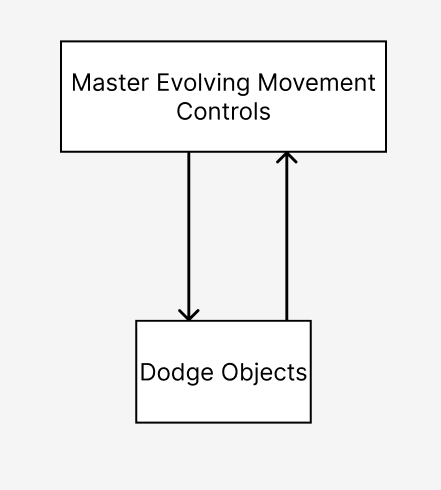Mental Mayham is a single-player memory puzzler. Players use a controller on their head to play the game.
Avoid getting hit or you will have to relearn what inputs will move you in what direction…
Group members consisted of Jingyi Chen, Avery Taylor, Mandel Canter.
Role: Group: Fabrication/Debugging
Duration: 2 Weeks
Tools Used: Unity
Genre: Puzzler/Memory
The creative aspects of the alt controller project were primarily compromised on what we saw would fit our alt controller thematically. We loved the idea of putting a controller on your head and wanted to design a game around what a brain controller would be. We knew that there was interest and intrigue in the idea, so the goal was to maximize the gameplay and provide player feedback to fit with it. The fact you have to press buttons on a brain controller prompted the idea to symbolize motor function skills and memory. We then thought it would be great to swap controls and utilize a relearn mechanic as that is what the brain does every day. The physical control was a driving inspiration for the game and through compromise, we were able to make a decent prototype. Without the brain, we wouldn’t have had the direction in which we ended up.
The player experience for this project was crafted to simulate motor function exercises, specifically if someone ended up in the hospital and needed to learn how to move again.
Immersion:
When it comes to immersion for this project, using a helmet with an exposed plastic brain was perfect for the player to feel the shape of a brain. The controller I made looked bloody and simulated this. We even decided to incorporate a bit of a narrative story for players when they play this game. They would sign a waiver to start the game, and we, the developers, would be wearing medical gowns.
Storytelling:
With storytelling and such a short time to complete the fabrication and testing, we let the controller tell the story. With more time, we would have been able to create more interesting levels with robust narratives. Ideally, I would have loved to incorporate more visual effects and a dedicated room to simulate a horror environment, potentially even creating an escape room-style room with many different challenges that unlock as the player gains their memories back by using the main controller.
User Experience:
The user experience I wanted to design was more abstract and themed to glitch/matrix ascii aesthetics. This style push would have created a more immersive user experience for the player - BREAK OUT OF THE SIMULATION. However, this wasn’t what was completed, so by the deadline, the project was a shell of what was planned. This is the truth about deadlines and what can happen under time constraints to get a game working by the deadline.
The thing I learned from this project was letting go of my expectations when working in a group and the importance of the team members' happiness is more important than my own desired outcome. I think it’s important that the team remains interested. The game design practice as a whole was a reinforcing exercise, as alternative controllers were something I was only relatively new to. This construction of the helmet controller was a lesson on fabrication.
The biggest takeaway from the playtesting was to test the controller before the day it was due. We found out our currents were reversed for half of our controller, which meant we needed to figure out a solution to fix it about two hours before it was due. I think for presentation, signage and visual references help draw attention, and though we didn’t start out with that, we eventually adapted. We went with what we knew how to do and left the ambition to the controller and the player input designs.


